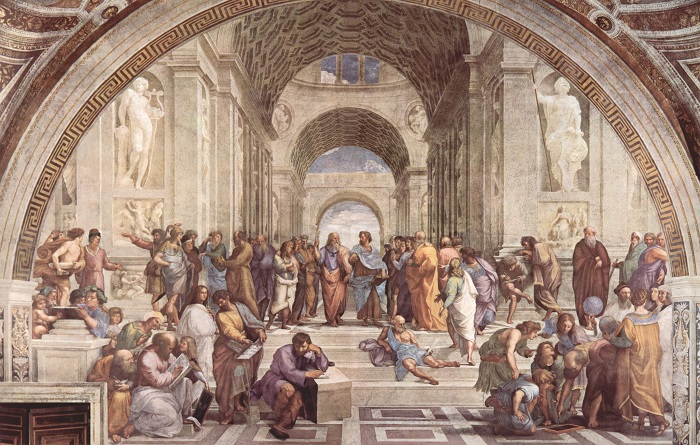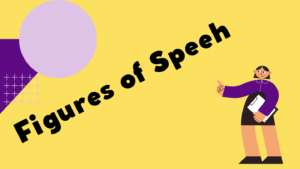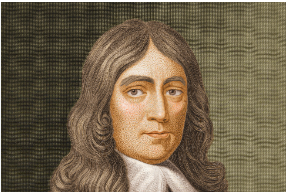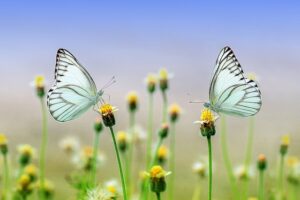Renaissance Poetry—Age of Rebirth of Arts, Literature and Humanism
The Renaissance, a cultural and intellectual movement that spanned roughly from the 14th to the 17th century, marked a pivotal period in the evolution of literature, arts, and human thought. Renaissance poetry, a vibrant and transformative facet of this era, reflected the spirit of renewal and rediscovery that characterized the period.
The term “Renaissance” itself, meaning “rebirth” in French, encapsulates the essence of this period. Emerging from the shadows of the medieval era, Renaissance poets drew inspiration from the classical works of ancient Greece and Rome. They embraced the humanist philosophy, which celebrated the inherent worth of individuals and their capacity for intellectual and artistic achievements. This shift in perspective had a profound impact on the themes, styles, and structures of poetry.

This note will explore the key features, themes, and notable poets of Renaissance poetry, shedding light on the profound impact it had on the literary landscape.
1. Revival of Classical Influences
Central to Renaissance poetry was the revival of classical influences from ancient Greece and Rome. Poets of this era, inspired by the works of classical writers like Virgil, Ovid, and Horace, sought to emulate and adapt their styles and themes. The renewed interest in classical literature contributed to the creation of a more sophisticated and learned poetic tradition.
2. Humanism and Individualism
The Renaissance was marked by a profound shift in intellectual focus from the divine to the human. Humanism, a philosophical and cultural movement, emphasized the study of classical texts, languages, and the inherent worth of the individual. In poetry, this translated into a celebration of human emotions, experiences, and intellect. Poets began to explore the complexities of the human psyche, giving voice to individual thoughts and feelings.
3. Petrarchan Sonnet Tradition
The Petrarchan sonnet, named after the Italian poet Petrarch, became a prominent poetic form during the Renaissance. Consisting of 14 lines with a specific rhyme scheme (typically ABBA ABBA CD CD CD or ABBA ABBA CDE CDE), Petrarchan sonnets often explored themes of unrequited love, beauty, and the passage of time. English poets like Sir Thomas Wyatt and Henry Howard, Earl of Surrey, introduced and popularized the Petrarchan sonnet in the English literary landscape.
4. Metaphysical Poetry
A distinctive subset of Renaissance poetry emerged known as metaphysical poetry. This genre, characterized by intellectual exploration and the use of elaborate metaphors and conceits, was pioneered by poets like John Donne, Andrew Marvell, and George Herbert. Metaphysical poets often grappled with complex themes such as the nature of love, the relationship between the spiritual and the physical, and the intricacies of human existence.
5. Epic and Narrative Poetry
Renaissance poets engaged in the composition of epic and narrative poetry, drawing inspiration from classical models. Edmund Spenser’s “The Faerie Queene” is a notable example, blending allegory with chivalric romance. The epic celebrated virtues and explored the allegorical journey of the knight, embodying the Renaissance fascination with idealism and moral allegory.
6. Shakespearean Sonnets and Dramatic Verse
William Shakespeare, often considered the epitome of Renaissance poetry and literature, made significant contributions to poetry alongside his theatrical works. His collection of 154 sonnets, written in a distinctive Shakespearean or Elizabethan form (ABAB CDCD EFEF GG), delved into themes of love, time, and the complexities of human relationships. Additionally, Shakespeare’s plays, written in dramatic verse, showcased his mastery of language and poetic expression.
7. Exploration of Nature and Realism
Renaissance poets demonstrated a keen interest in the observation and appreciation of the natural world. Christopher Marlowe’s pastoral poem, The Passionate Shepherd to His Love, is an excellent example of this trend. Poets celebrated the beauty of nature, marking a departure from the medieval preoccupation with otherworldly themes.
8. Printing Press and Dissemination
The invention of the printing press played a crucial role in the dissemination of Renaissance poetry. With the ability to produce books more efficiently, poetic works became more accessible to a broader audience. This democratization of literature contributed to the widespread influence of Renaissance poets and their lasting impact on subsequent generations. In conclusion, Renaissance poetry stands as a testament to the intellectual and cultural dynamism of an era marked by rebirth and rediscovery. The poets of the Renaissance, through their engagement with classical influences, humanist ideals, and innovative forms, forged a literary tradition that continues to be celebrated for its richness, diversity, and enduring relevance in the panorama of world literature.
#Renaissance poetry #Renaissance poetry #Renaissance poetry
Read More
Michael Henchard As a Man of Character
Visit Us on our Facebook Page:





